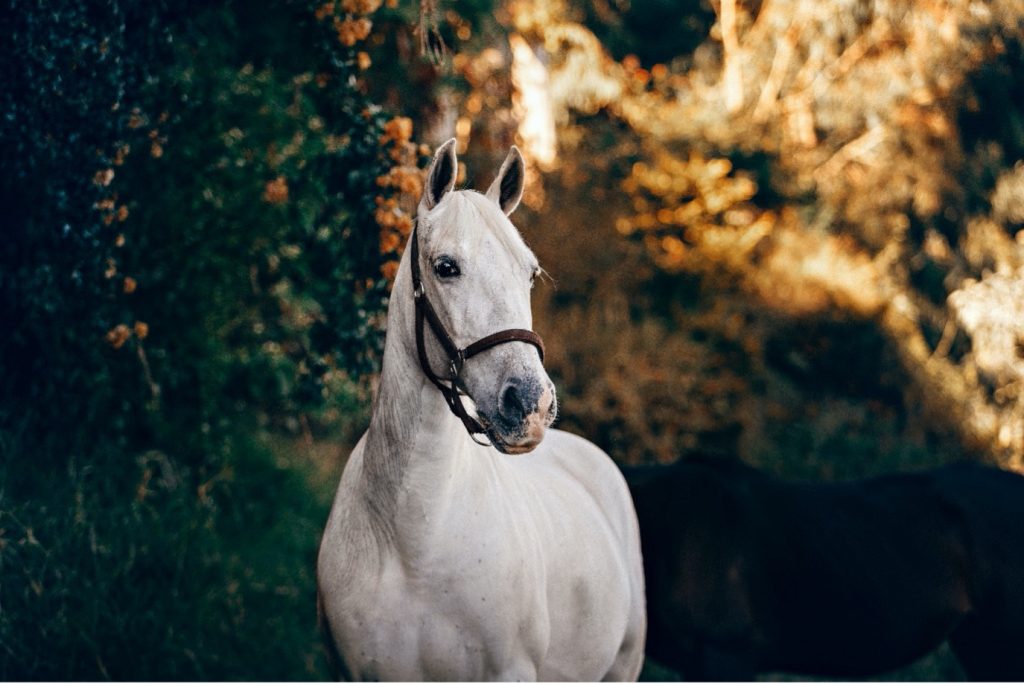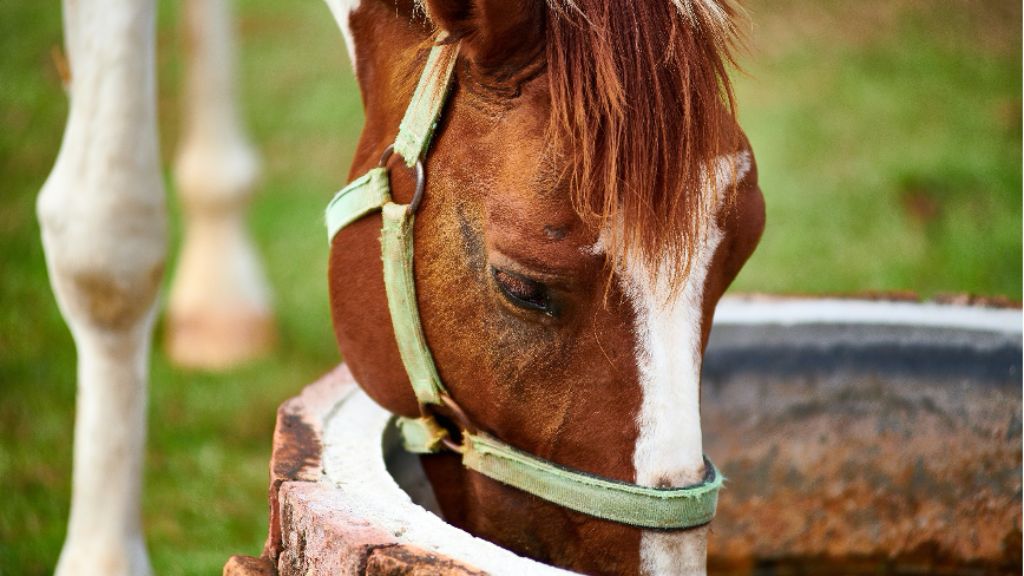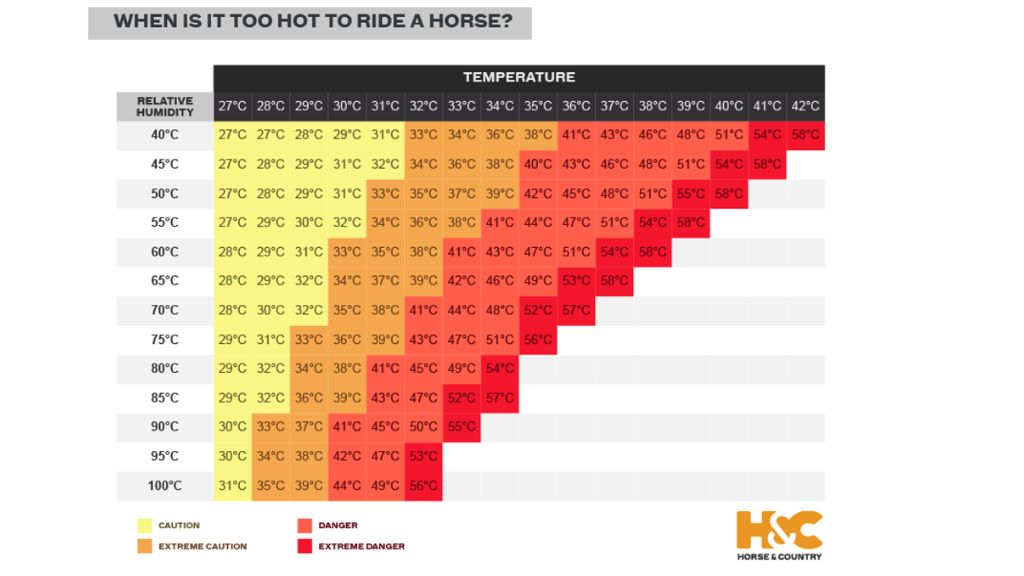
After a long winter and our infamously fickle British springtime, we might welcome warm, sunny days with open arms. However, your horse can struggle to regulate their temperature and stay hydrated during summer or an unexpected heatwave.
Luckily, there are plenty of ways you can keep your horse happy and healthy when temperatures soar. Read on for five ways to help your horse beat the heat, shared by the equine enthusiasts at Horse & Country.
1. Keep them hydrated
For both humans and animals, one of the first priorities during hot weather is having access to plenty of clean water. Horses are very efficient at cooling down after periods of exercise, but this is because they release a significant amount of sweat – you may have seen this in the form of steam coming off the winning horse at the end of a race. In fact, a horse weighing 500 kilograms can lose anywhere up to ten litres of sweat after two hours of moderate exercise (Equinavet).
It’s therefore important that you provide your horse with a constant supply of fresh water, whether you have them stabled or are travelling. Automatic troughs can help keep the water cool and appealing to your horse if they don’t usually drink well, and this can be more appetising than buckets that become stagnant over time. You could even flavour their water with apples or mint leaves to encourage as much drinking as possible on hot days.
For horses who are in heavier work or are poor doers, switching from hay to haylage can be a great way of keeping them hydrated, especially if they don’t tend to drink enough on their own. It might be a little more expensive and higher in calories, but haylage has a higher water content because the grass is wilted for less time after being cut (Dengie). Even if you just switch to haylage for the summer months, this can help keep your horse as hydrated as possible. For a slightly cheaper and lower-calorie solution, you can also soak your hay —however, as this can slightly reduce its nutritional content, be sure not to soak the hay for longer than 6 hours and supplement their bucket feed with some of the electrolytes outlined below.
2. Replace their electrolytes

Horses don’t just lose water when they sweat, they also lose a lot of important electrolytes. In the same way that we use sports drinks after exercising, horses also benefit from replacing the salt and minerals that they lose from perspiration.
One way to do this is by providing your horse with a salt block, as they naturally seek out more sodium when they are lacking it in their diet. However, they can often get carried away with salt blocks and lick more than they should! This can not only irritate their tongues but too much salt can also lead to more dehydration, so rather than leaving the block in their stable, bring it along with you when putting out fresh hay or mucking out. You can also add a teaspoon of salt to their feed, or a supplement with a blend of electrolytes like magnesium, calcium, and potassium.
3. Clip their coat
Horses with a longer coat will still want to get out of the stable and enjoy the sun, so when summer rolls around or a heatwave is on the way, be sure to clip their hair. This can be a particularly important step for horses with Cushing’s disease or PPID (pituitary pars intermedia dysfunction) — this causes increased coat length and delayed shedding of the winter coat, as well as increased sweating, low energy, and a higher susceptibility to laminitis (Royal Veterinary College).
Keeping their coat short allows them to better regulate their body temperature and decreases water loss from excess sweating. Remember, though, that the skin previously covered by thick hair will be more sensitive to the sun, so it’s often wise to put on thin summer sheets or a fly rug just after clipping.
4. Alter their turnout routine
While you may want to make the most of the good weather (as fleeting as it can be in the UK), try to avoid exercising your horse in the midday sun when temperatures are at their highest. Instead, aim to get out on a ride earlier in the morning or later in the evening so that you can still enjoy the sunshine together while it’s slightly cooler. The table below gives some guidance on exercising caution when you’re out riding in hot weather.

You may also want to alter your usual turnout routine during the summer to give your horse more time outside during the evenings and early morning. If you decide to stable them throughout the day when temperatures are highest, just be sure that your stables have proper airflow and don’t get too warm. Try spending a stretch of time in there yourself to check whether you feel too warm and move them to a more sheltered spot or even provide some fans if necessary.
5. Protect their skin
Did you know that as well as giving yourself a layer of SPF on sunny days, your horse can also benefit from some sun cream? While this is mainly the case for pale horses like those with grey coats, other hairless patches or pink-skinned areas like their muzzle can also be prone to burning under direct sunlight (Animal Friends). Using fly rugs and other lightweight covers can also help to protect from the sun’s rays and prevent their coat from bleaching.
If you’re experiencing a particularly long heatwave, your horse will always appreciate a cold shower — especially if their paddock doesn’t have much shade or your stables have limited airflow. A shower with the hose is sure to cool them down when temperatures spike, and this will reduce how much water they lose through sweating to cool off.
Katie Allen-Clarke, Director of Marketing at Horse & Country comments:
“Hot summer days are welcome break from a long British winter, and there’s nothing better than getting out on a sunny ride with your horse. However, it can also be easy for our horses to overheat and struggle to regulate their temperature during the summer months, or an unexpected heatwave.
“While horses can cool off quickly through sweating, this loses them a lot of water and electrolytes and means they run the risk of serious dehydration. As well as keeping them hydrated and ensuring their paddock has enough shade, it’s also wise to consider things like sun protection, clipping their coat, and introducing a slightly altered diet for warm weather. This way you and your horse can head out into the sunshine together while staying healthy and happy.”
About the brand
Horse & Country is the leading international sports network for the passionate and active equestrian community. Headquartered in London, the network is available globally via connected TVs, mobile, web, and on leading digital and pay-TV platforms across the US, UK, Ireland, Germany, Austria, the Netherlands, Sweden, and Australia. Horse & Country’s programming line-up includes live coverage from leading sporting competitions in all equestrian disciplines, as well as training shows, documentaries, and entertainment.
To learn more, visit: www.horseandcountry.tv
References and further reading
https://www.animalfriends.co.uk/horse-and-rider/horse-blog/keeping-horses-cool-in-the-summer/
https://www.rvc.ac.uk/equine-vet/information-and-advice/fact-files/cushings-disease





